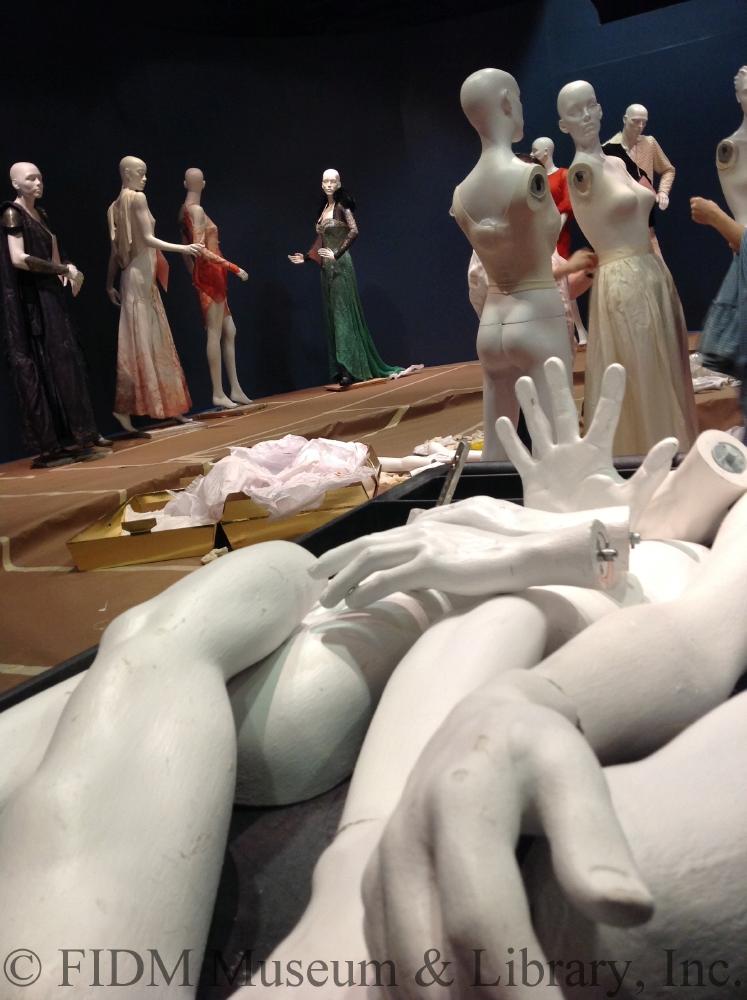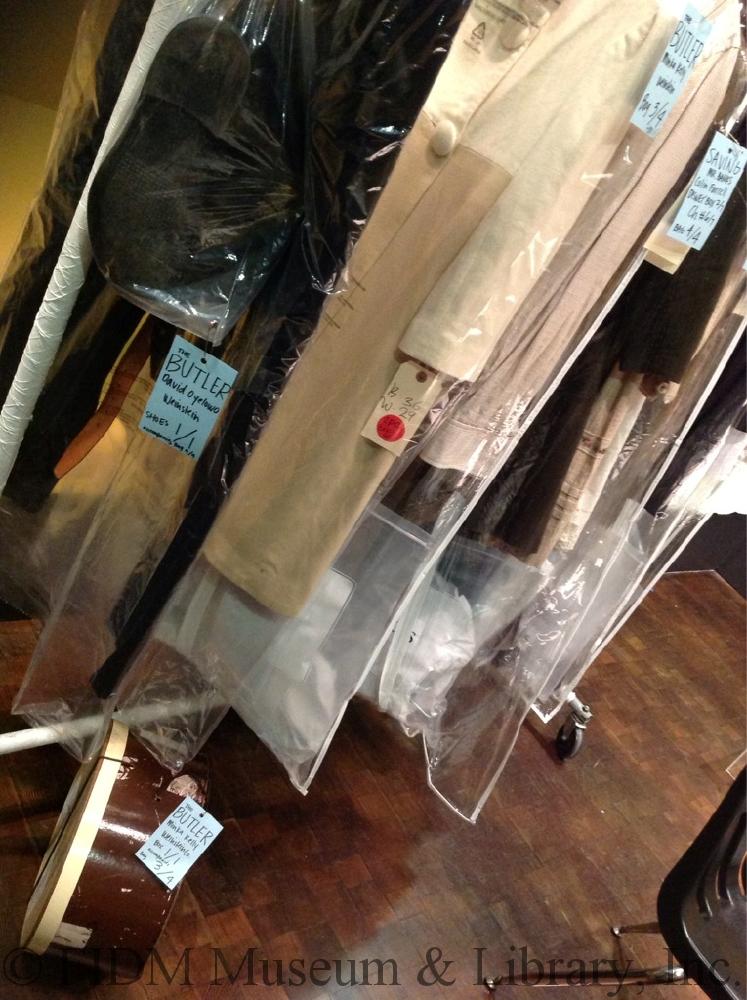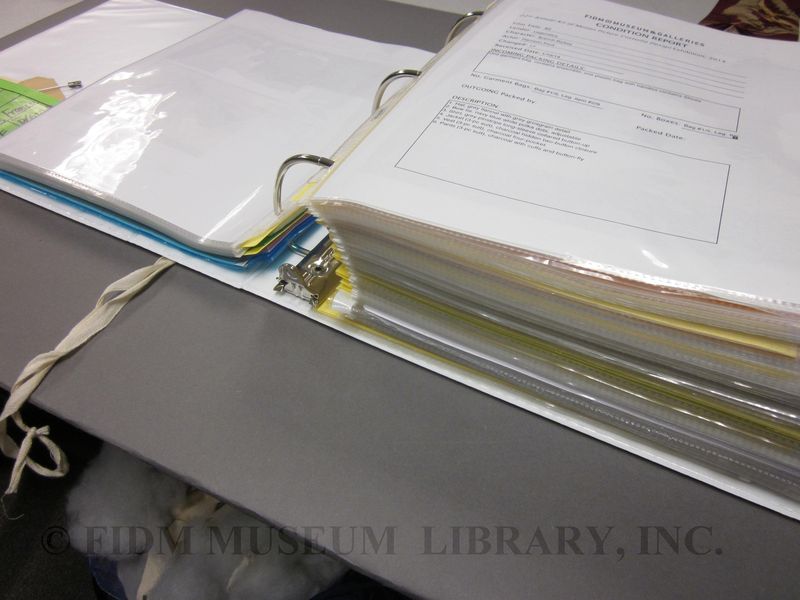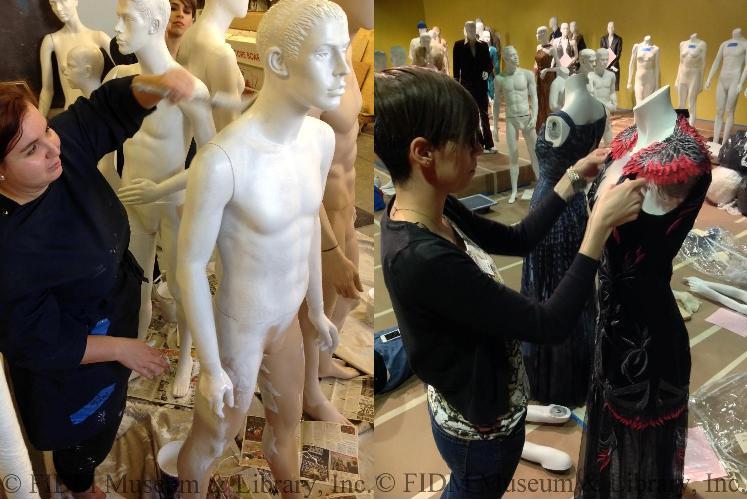When you visit the 22nd Annual Art of Motion Picture Costume Design Exhibition, you'll see a flawless display of more than 100 costumes. Of course, those mannequins didn't dress themselves! Today's post, written by FIDM Museum Registrar Meghan Hansen, describes all the pre-planning that happens in the weeks before the exhibit opens to the public. It's the first of three posts offering a behind the scenes look at this beloved annual exhibition.
**********
When I tell people I am a Museum Registrar at a fashion museum, I am usually met with kindly nods or blank stares. And the next question, "So you design clothes?" Or perhaps more closely to the truth, "You're a curator?" While I'm fortunate to work at an institution that gives me such opportunities (and I have curated a few small installations in our Perfume Gallery), that's actually not part of my job description. As registrar, I do the "boring" paperwork—loan forms, inventory, insurance, accessioning and de-accessioning collections, and so forth. But there is a whole world of excitement and variety to this job, that isn't immediately apparent from my job description. I thought I'd fill our readers in on what a registrar does, in the context of our current exhibition, the 22nd Annual Art of Motion Picture Costume Design Exhibition.
 The first days of exhibition installation for the 22nd Annual Art of Motion Picture Costume Design exhibition.
The first days of exhibition installation for the 22nd Annual Art of Motion Picture Costume Design exhibition.
Let's imagine we're on a movie set: who is in charge? The director, you say? The director is certainly the creative boss of a movie production, but the real bosses are the producers. They choose the script, find the funding, make the budget, hire the director and other creative "above-the-line" types, and run the day to day operations of the filming. The producers may never put their hands on a camera or give notes to an actor, but they are responsible for getting the film shot, edited, and distributed.
In the same way, the registrar (along with numerous other museum staff) works behind the scenes to turn an idea into reality. While the curator is planning the objects to be included—in this case, our museum coordinator Michael Black—the registrar handles logistics like loan agreements, shipping, and insurance. This registrar is very fortunate that Mr. Black makes most of these arrangements for this particular exhibition, since he maintains close contacts with costume designers, studios, archives, and rental houses.
 As costumes are received, museum staff mark all garment bags, boxes, or other containers so that each piece is returned to the lender exactly as it was received. Costumes from Lee Daniels’ The Butler courtesy of The Weinstein Company.
As costumes are received, museum staff mark all garment bags, boxes, or other containers so that each piece is returned to the lender exactly as it was received. Costumes from Lee Daniels’ The Butler courtesy of The Weinstein Company.
Other planning takes place while loan arrangements are made—condition report templates are prepared for the iPad we use for checking in costumes; supplies are purchased; and the all-important exhibition binder is prepared to hold the condition reports, inventories, reference images, and other relevant documents pertaining to the loaned costumes to be displayed.
 For the first time ever, we used technology to record the exhibition loans; however, it’s always important to keep a hard copy.
For the first time ever, we used technology to record the exhibition loans; however, it’s always important to keep a hard copy.
Meanwhile, I meet with my colleagues to determine our staffing needs for exhibition installation. With two exhibitions being installed concurrently, our curatorial staff of five is stretched thin. When budget allows, we hire contract museum preparators to assist with the four-week installation process. We also solicit volunteers who are eager to help and experience the museum behind the scenes.
 Volunteer Danielle Bass and Intern Danielle Clark-Perez assist with mannequin preparations and dressing. Hunger Games: Catching Fire costume courtesy of Lionsgate.
Volunteer Danielle Bass and Intern Danielle Clark-Perez assist with mannequin preparations and dressing. Hunger Games: Catching Fire costume courtesy of Lionsgate.
Once the number of workers is established, I can devise a workflow to economize on limited staff, space, time, and materials. I work with the Gallery Director and Museum Coordinator to determine the gallery layout, which has some fluidity due to the last-minute nature of receiving the costumes. And I oversee selection of mannequins based on measurements taken during condition reporting. More on this process next time…

